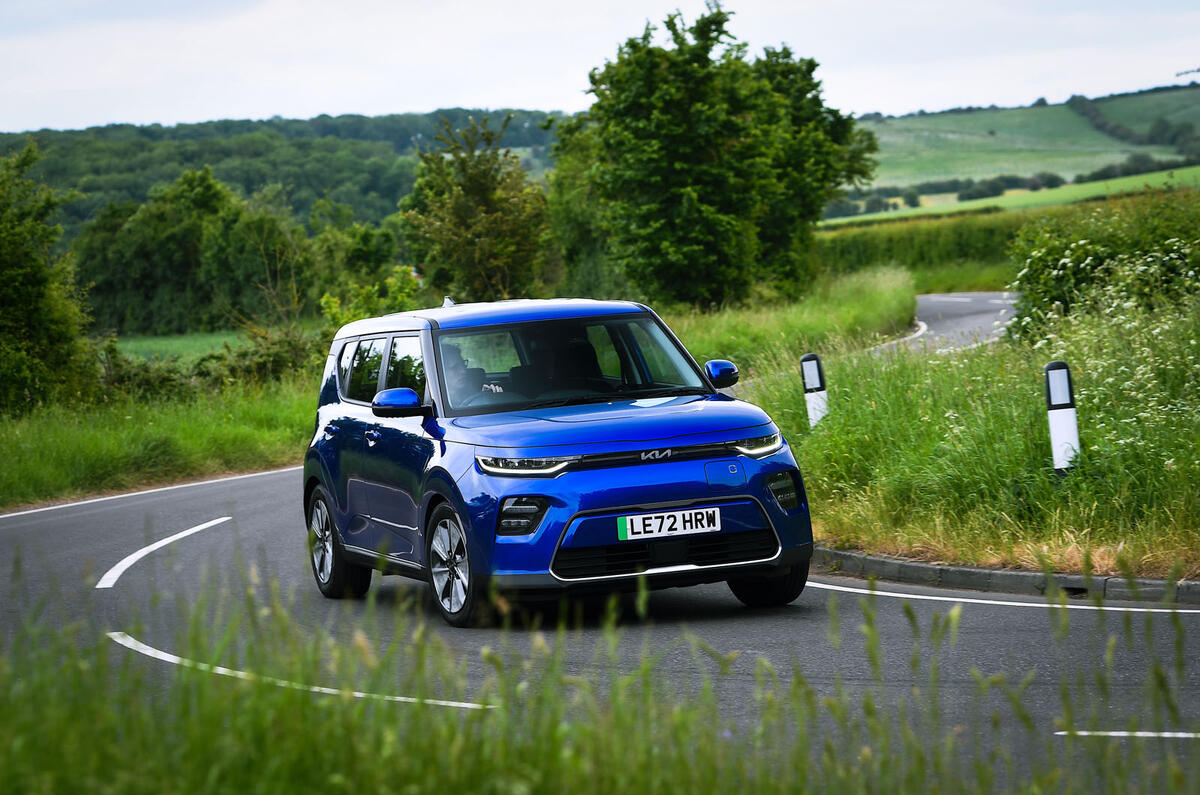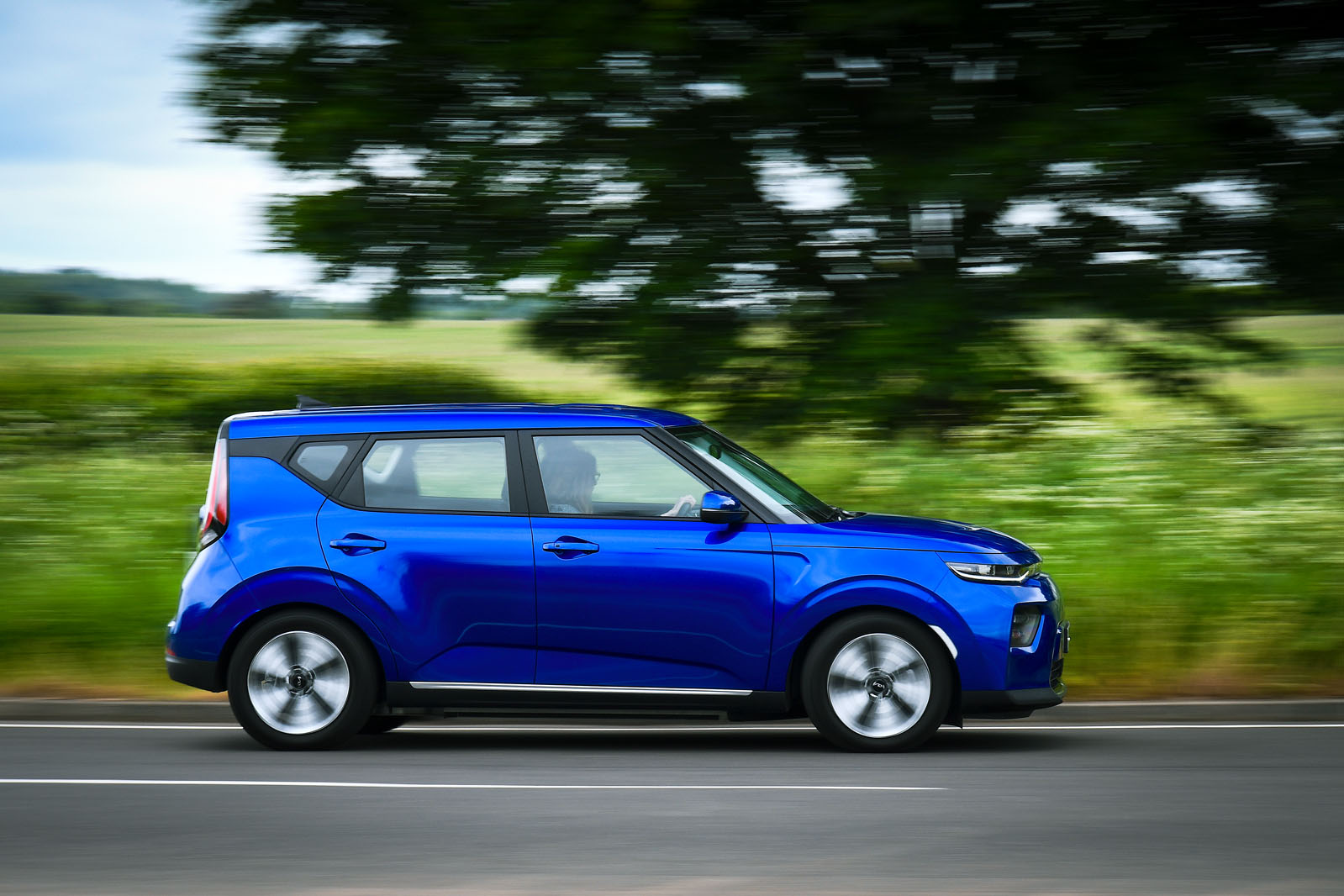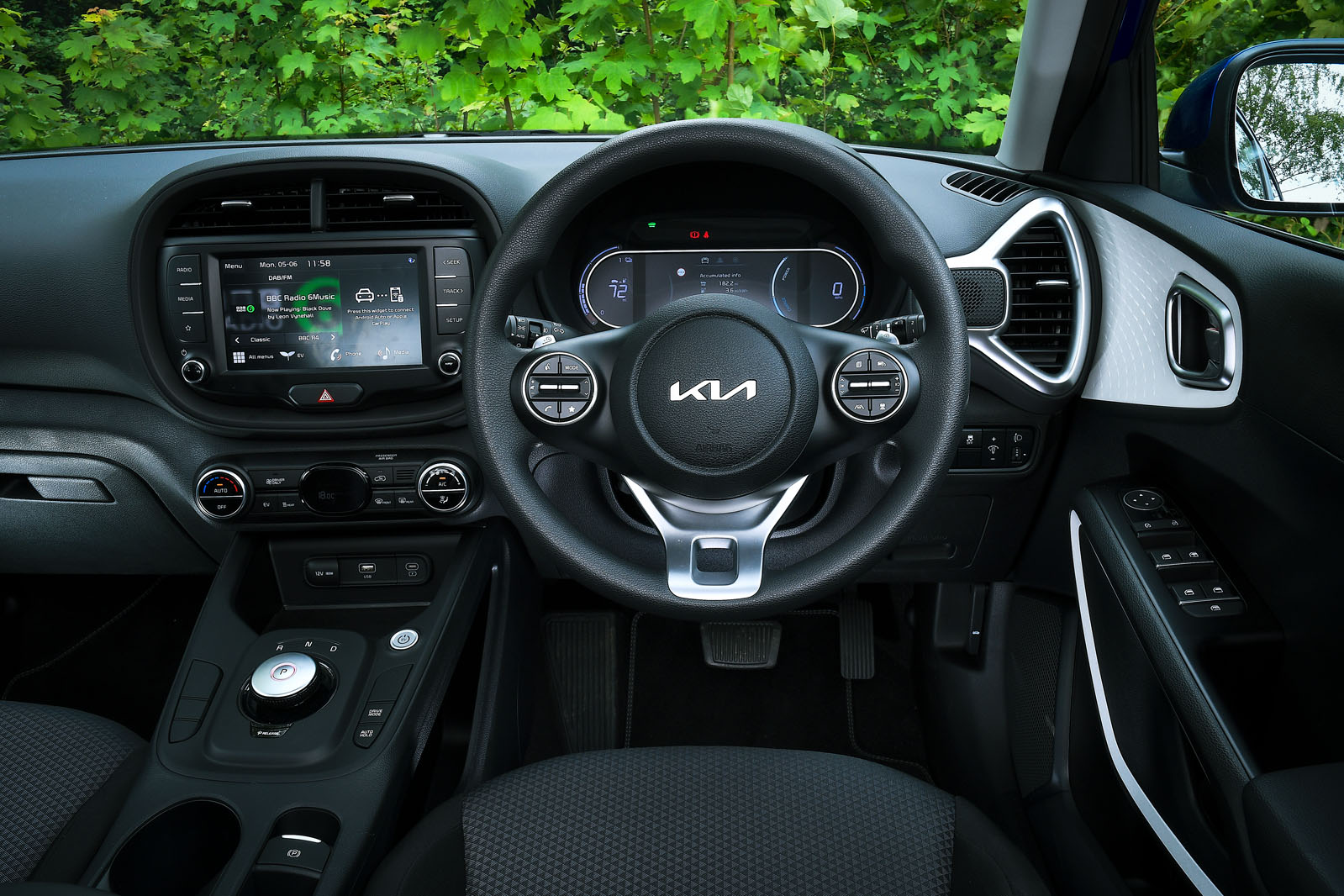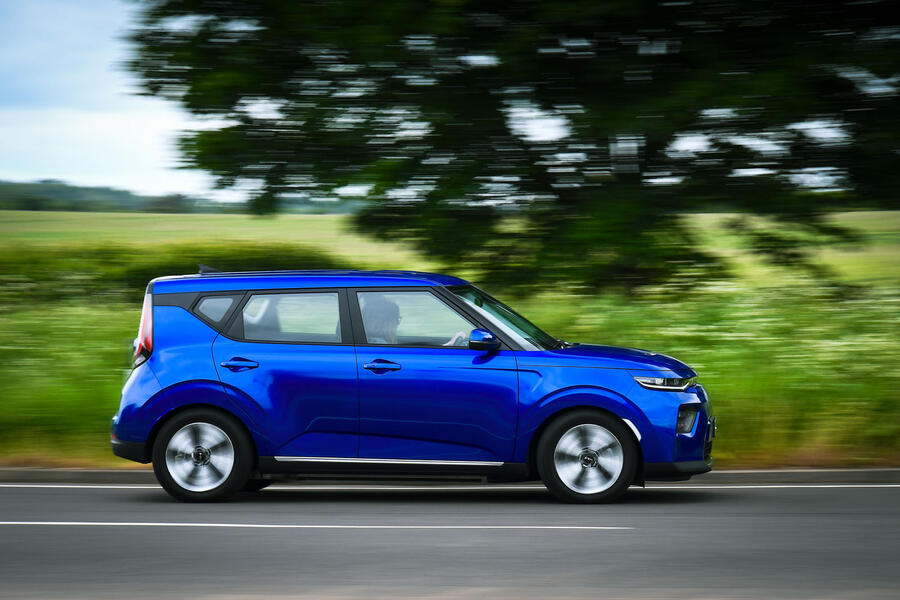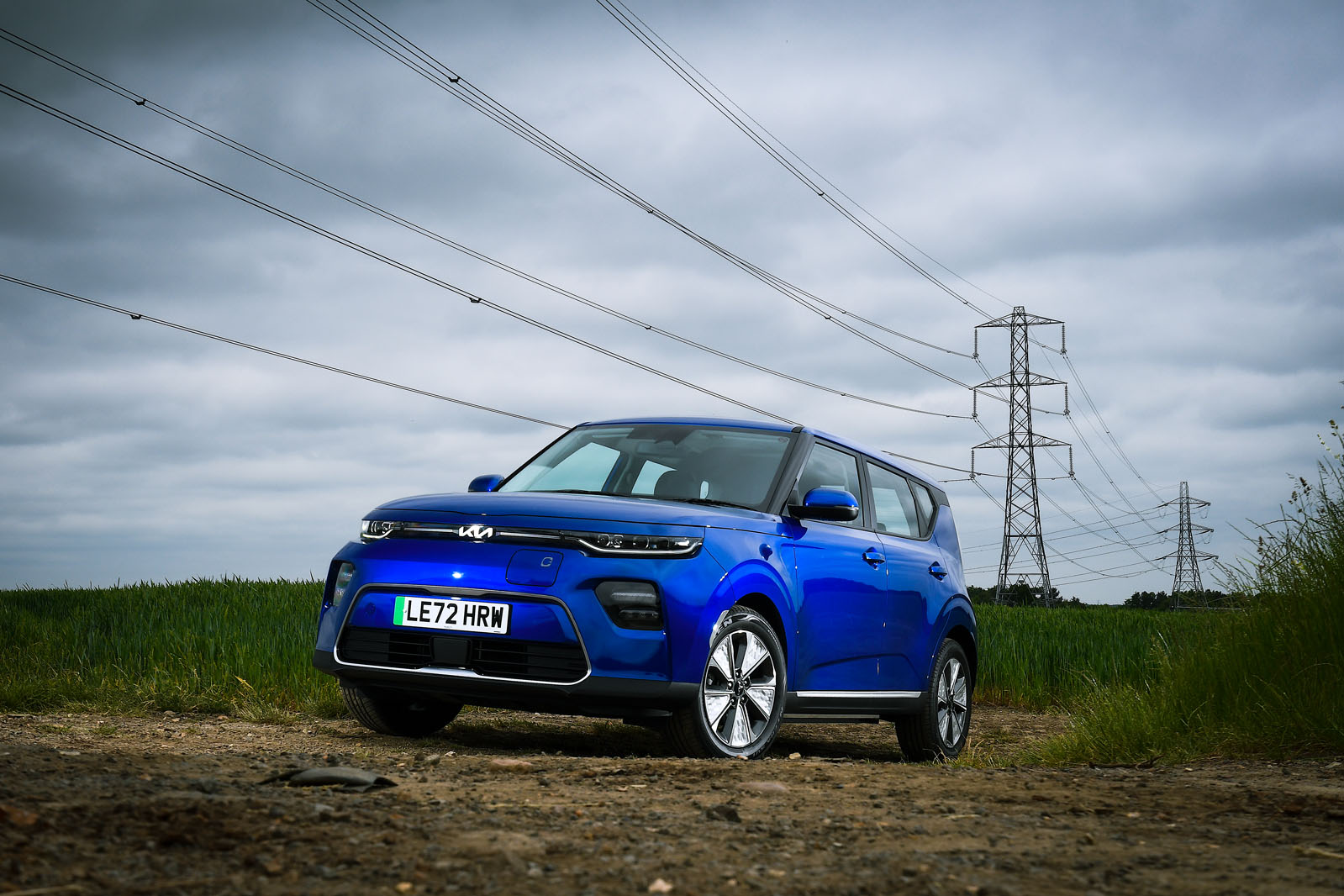The Soul seems to be from a transitional period in Kia’s interior design between the fairly safe Ceed and previous-gen Niro on the one hand, and the more adventurous EV6 and new Niro on the other.
There’s still a bit of slabbiness to the passenger-side dash and the door panels, but the ambience is livened up with unusually shaped ‘metal’ air vents that also house the tweeters for the audio system.
While Kia noticeably penalises you with lower-grade materials for choosing the lowest trim on the Niro, the Soul Urban is arguably more inviting than the more expensive Explore. The Urban gets textured white trim panels and a mildly interesting triangle-patterned cloth for the seats to liven the place up, whereas the Explore is rather more sombre, with black trim and black leather seats. The door handles also feel surprisingly mechanical. Overall, it’s a nicer place to be than a Nissan Leaf or MG 4 EV.
That said, this is not exactly a plush cabin and most of the materials are hard plastic, which is fine in what is supposed to be a more budget-oriented EV. By and large, the build quality seems good, as we are used to from Kia, but there is one exception: the centre console is really quite loose, and moves about a centimetre when you lean your knee against it.
The Soul retains plenty of physical buttons (and a fair few button blanks in this de-contented version), so you are never left swiping through menus for basic functions. The climate control is only single-zone, though, and frustratingly for an EV, the Urban model does not get heated seats, nor can they be added as an option (you have to upgrade to Explore trim). A heat pump is not available on the Soul at all.
Although the Soul Urban gets a more basic central infotainment screen, the gauge cluster – a part-analogue, part-digital unit – is the same on both versions. It’s not especially fancy, but it is very clear, with big numbers, simple graphics and menus that are easy to fathom.
The Soul is a smaller car than most of the C-segment electric hatchbacks, but it’s much bigger than a supermini, and that is reflected in its back-seat accommodation. Adults will feel a bit cramped when coming from a Cupra Born or even an MG 4 but can still absolutely fit and will have slightly more leg room than in a Citroën ë-C4. And thanks to the Soul’s horizontal roof line, they could wear quite a bulky hat if they feel like it.
At 315 litres, the boot isn’t anything special, but it’s a nice square shape and even this entry-level version gets a variable-height floor that creates a good space for charge cables and creates a flat load bay when you fold down the rear seats. There is no luggage space under the bonnet.
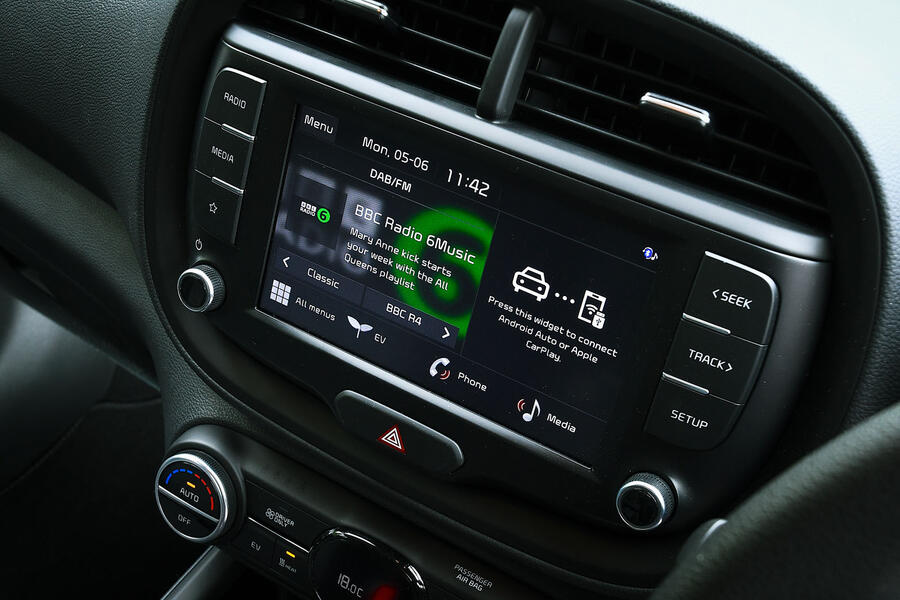
Multimedia system
One of the most noticeable downgrades from the Soul Explore to the Soul Urban is the infotainment system. Instead of a 10.25in screen, the cheaper version gets a fairly low-resolution 8.0in display that lacks navigation.
It may not look like much, but if you are the kind of driver who simply defaults to phone mirroring, it works absolutely fine, as it has wireless Apple CarPlay and wired Android Auto, which integrate well with the (basic) native interface.
Strangely, the upgraded infotainment system only has wired CarPlay, while the one in the Urban only works wirelessly. During our time with the car, the connection proved stable.
From previous experiences with Kias, we know the upgraded system to be logical, easy to use and responsive with a built-in navigation system that does the job, but it is nowhere near as clever as a Tesla’s in planning routes via rapid chargers. Both systems get a row of physical shortcut buttons, as well asa physical volume control. Audio quality was satisfactory.




